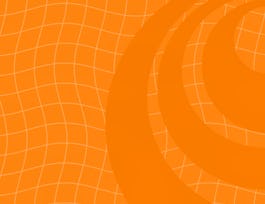Welcome to Remote Sensing Image Acquisition, Analysis and Applications, in which we explore the nature of imaging the earth's surface from space or from airborne vehicles.


Remote Sensing Image Acquisition, Analysis and Applications
Taught in English
Some content may not be translated
14,016 already enrolled
(140 reviews)
Recommended experience
Skills you'll gain
Details to know

Add to your LinkedIn profile
18 quizzes
See how employees at top companies are mastering in-demand skills


Earn a career certificate
Add this credential to your LinkedIn profile, resume, or CV
Share it on social media and in your performance review

There are 15 modules in this course
Remote sensing is the science and technology of acquiring images of the earth’s surface from spacecraft, aircraft and drones to aid in the monitoring and management of the natural and built environments. Extensive computer-based analysis techniques are used to extract information from the recorded images in support of applications ranging over many earth and information science disciplines. This course covers the fundamental nature of remote sensing and the platforms and sensor types used. It also provides an in-depth treatment of the computational algorithms employed in image understanding, ranging from the earliest historically important techniques to more recent approaches based on deep learning. The course material is extensively illustrated by examples and commentary on the how the technology is applied in practice. While broad in its coverage the 15 hours of instruction, supported by quizzes and tests, will prepare participants to use the material in their own disciplines and to undertake more detailed study in remote sensing and related topics.
What's included
6 videos4 readings1 quiz
What's included
4 videos1 quiz
What's included
5 videos1 quiz
What's included
4 videos1 quiz
What's included
3 videos1 reading2 quizzes
What's included
5 videos2 readings1 quiz
What's included
6 videos1 quiz
What's included
3 videos1 quiz
What's included
5 videos1 quiz
What's included
4 videos1 reading2 quizzes
What's included
6 videos2 readings1 quiz
What's included
5 videos1 quiz
What's included
4 videos1 quiz
What's included
4 videos1 quiz
What's included
7 videos1 reading2 quizzes
Instructor

Recommended if you're interested in Electrical Engineering

Coursera Project Network

Yonsei University

DeepLearning.AI

Coursera Project Network
Why people choose Coursera for their career




Learner reviews
Showing 3 of 140
140 reviews
- 5 stars
75.71%
- 4 stars
18.57%
- 3 stars
3.57%
- 2 stars
2.14%
- 1 star
0%

Open new doors with Coursera Plus
Unlimited access to 7,000+ world-class courses, hands-on projects, and job-ready certificate programs - all included in your subscription
Advance your career with an online degree
Earn a degree from world-class universities - 100% online
Join over 3,400 global companies that choose Coursera for Business
Upskill your employees to excel in the digital economy
Frequently asked questions
Access to lectures and assignments depends on your type of enrollment. If you take a course in audit mode, you will be able to see most course materials for free. To access graded assignments and to earn a Certificate, you will need to purchase the Certificate experience, during or after your audit. If you don't see the audit option:
The course may not offer an audit option. You can try a Free Trial instead, or apply for Financial Aid.
The course may offer 'Full Course, No Certificate' instead. This option lets you see all course materials, submit required assessments, and get a final grade. This also means that you will not be able to purchase a Certificate experience.
When you purchase a Certificate you get access to all course materials, including graded assignments. Upon completing the course, your electronic Certificate will be added to your Accomplishments page - from there, you can print your Certificate or add it to your LinkedIn profile. If you only want to read and view the course content, you can audit the course for free.
You will be eligible for a full refund until two weeks after your payment date, or (for courses that have just launched) until two weeks after the first session of the course begins, whichever is later. You cannot receive a refund once you’ve earned a Course Certificate, even if you complete the course within the two-week refund period. See our full refund policy.




